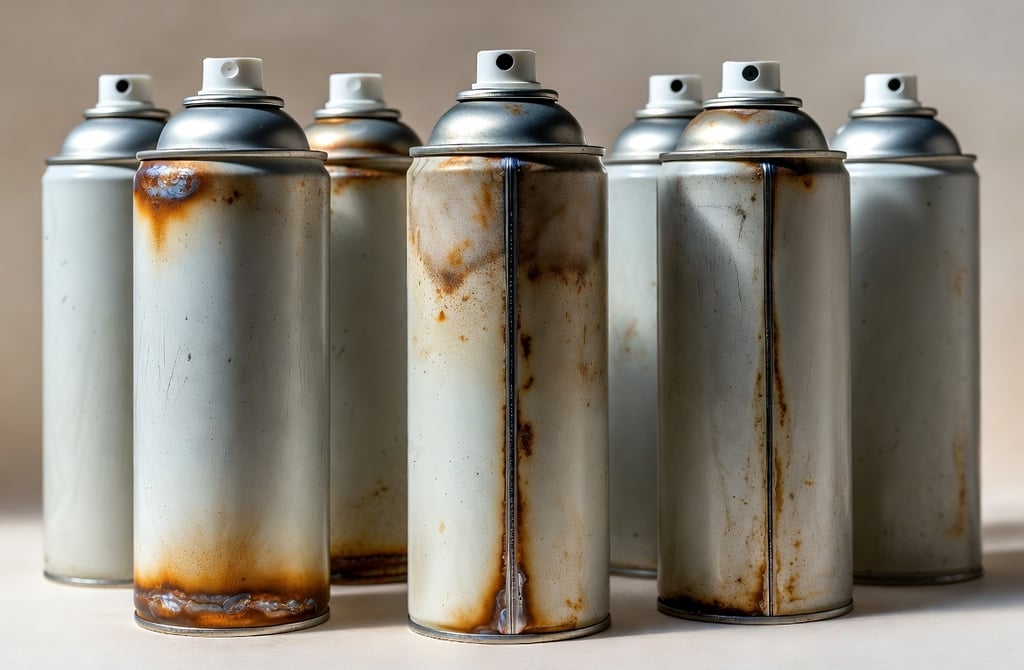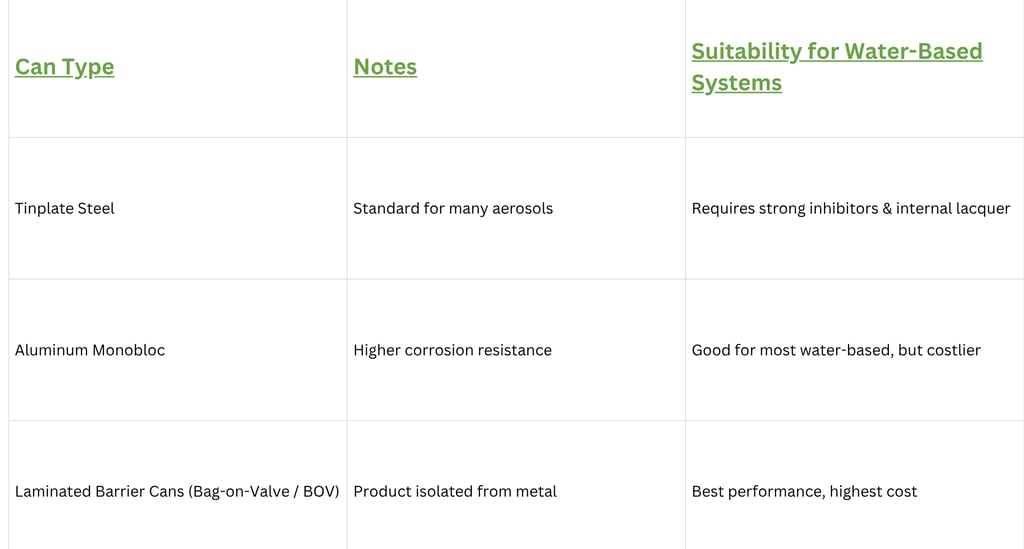Aerosol Can Corrosion -2
Corrosion in Aerosol Cans, Causes, Types and Remedies - Part 2


Industrial Strategies to Control Corrosion in Aerosol Cans
2. Internal Coatings (Lacquer Systems)
The coating must resist:
Surfactant wetting
pH drift
Water permeability
Common successful systems:
Epoxy-phenolic hybrid lacquers
Acrylic-epoxy copolymers
Polyester-based lacquer systems for high-pH cleaners


Use of Corrosion Inhibitors
Corrosion inhibitor packages are designed to reduce or block metal–water interaction at the can surface. Effective inhibition typically involves a combination of mechanisms, including:
Surface Passivation: Formation of a thin, adherent protective film on the metal surface to prevent direct contact with water and dissolved ions.
Boundary Layer Modification: Reduction of solution wetting and surface spreading, so the formulation does not maintain continuous contact with the can wall.
Ion Activity Control: Stabilization or neutralization of reactive ions that can trigger or accelerate corrosive attack.
pH Stabilization: Keeping the formulation within a non-aggressive pH window over shelf life, even under temperature fluctuations or additive breakdown.
Headspace Protection: Establishing a vapor-phase barrier that protects not only the liquid-contact area but also the internal surfaces exposed to the pressurized gas phase.
Localized Defect Protection: Inhibitors migrate preferentially to scratches, seams, and coating discontinuities, where corrosion would initiate first.
Facing Corrosion Challenges in Water-Based Aerosols?
If you're experiencing shelf-life failures, product instability, or can corrosion issues, we can help.
Global Aerosols provides end-to-end support including formulation optimization, corrosion-inhibitor strategy, packaging compatibility selection, and accelerated testing protocols.